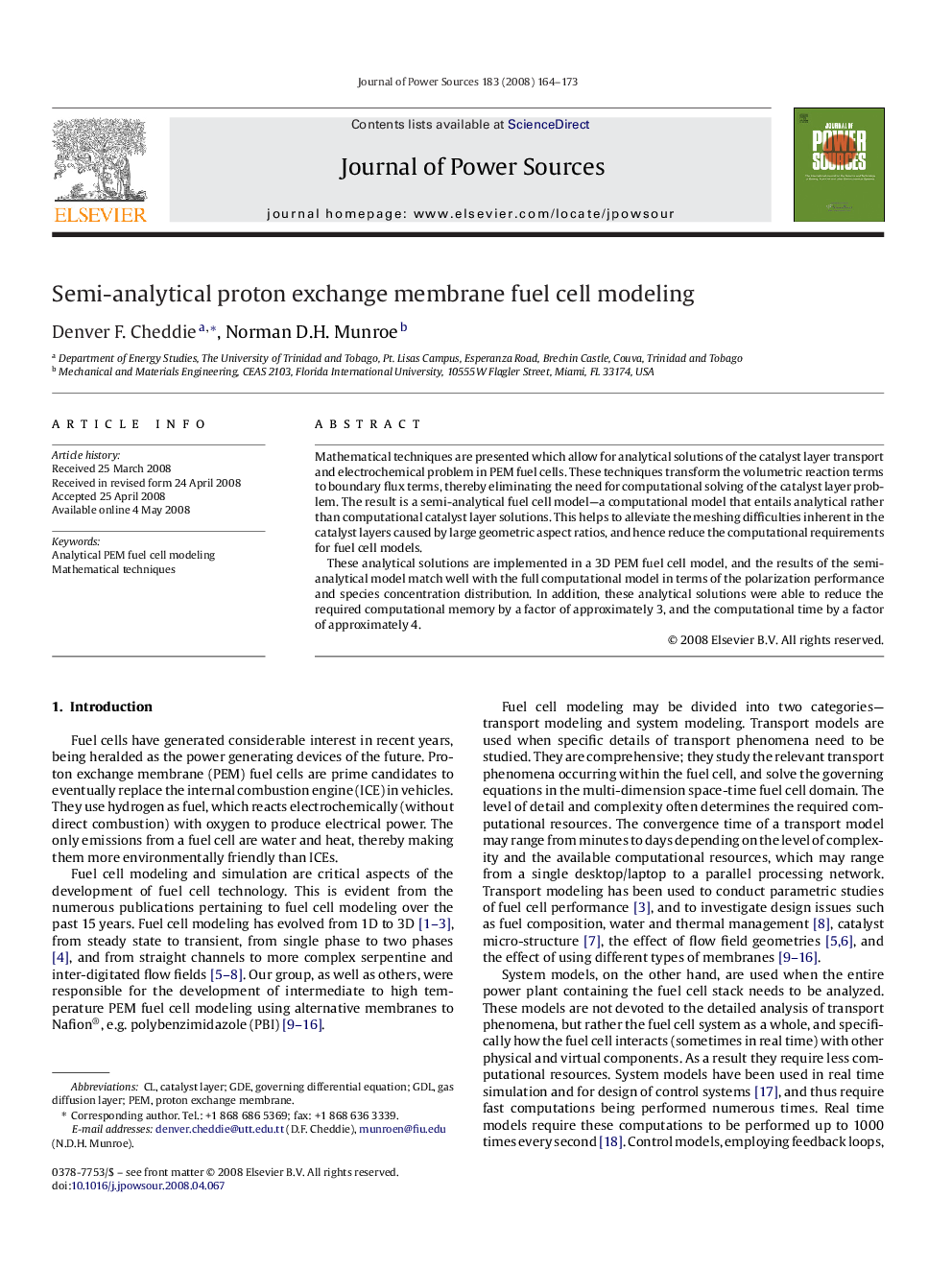| Article ID | Journal | Published Year | Pages | File Type |
|---|---|---|---|---|
| 1285395 | Journal of Power Sources | 2008 | 10 Pages |
Mathematical techniques are presented which allow for analytical solutions of the catalyst layer transport and electrochemical problem in PEM fuel cells. These techniques transform the volumetric reaction terms to boundary flux terms, thereby eliminating the need for computational solving of the catalyst layer problem. The result is a semi-analytical fuel cell model—a computational model that entails analytical rather than computational catalyst layer solutions. This helps to alleviate the meshing difficulties inherent in the catalyst layers caused by large geometric aspect ratios, and hence reduce the computational requirements for fuel cell models.These analytical solutions are implemented in a 3D PEM fuel cell model, and the results of the semi-analytical model match well with the full computational model in terms of the polarization performance and species concentration distribution. In addition, these analytical solutions were able to reduce the required computational memory by a factor of approximately 3, and the computational time by a factor of approximately 4.
